Corfu, perhaps surprisingly, is one of the more rural, sleepy islands away from the touristic honeypotsAlamy


 Sedimentary rock formations make up the stunning cliffs at Paleokastritsa
Sedimentary rock formations make up the stunning cliffs at Paleokastritsa
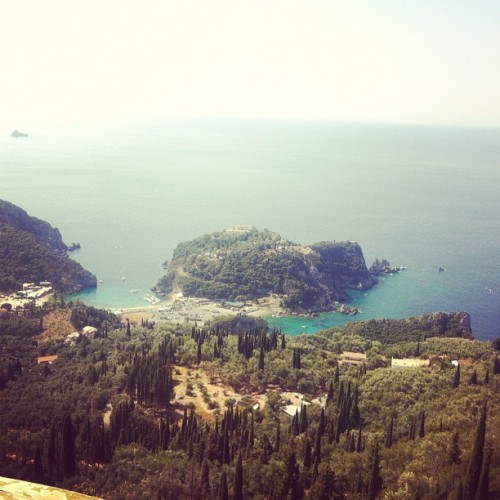
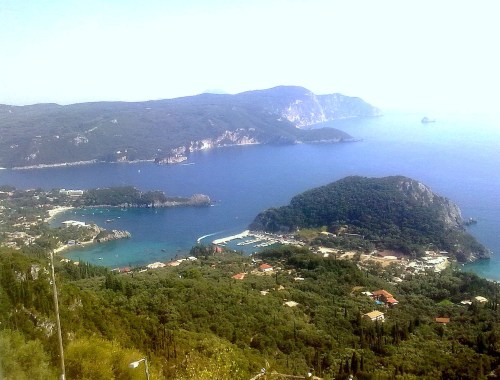 Corfu has figured in our consciousness since Edward Lear visited and painted while it was a British possession from 1814 to 1864. The Durrell brothers (and Henry Miller) lodged it even more firmly in the Anglo-Saxon psyche with their late-1930s sojourns, and subsequent rhapsodising in print.
Corfu has figured in our consciousness since Edward Lear visited and painted while it was a British possession from 1814 to 1864. The Durrell brothers (and Henry Miller) lodged it even more firmly in the Anglo-Saxon psyche with their late-1930s sojourns, and subsequent rhapsodising in print.
 Today the island has a somewhat chequered reputation, due in part to its associations with Peter Mandelson/Nat Rothschild (habitués of the north-east coast, popularly dubbed “Kensington on Sea”) but also the notoriously downmarket excesses of Kávos in the south.
Today the island has a somewhat chequered reputation, due in part to its associations with Peter Mandelson/Nat Rothschild (habitués of the north-east coast, popularly dubbed “Kensington on Sea”) but also the notoriously downmarket excesses of Kávos in the south.
 Yet there is plenty in between for the rest of us, on one of the greenest of the Greek islands – thanks to intermittent but torrential rains from September to May, and the thousands of olive trees that carpet the landscape. It is also, perhaps surprisingly, one of the more rural, sleepy islands away from the touristic honeypots.
Yet there is plenty in between for the rest of us, on one of the greenest of the Greek islands – thanks to intermittent but torrential rains from September to May, and the thousands of olive trees that carpet the landscape. It is also, perhaps surprisingly, one of the more rural, sleepy islands away from the touristic honeypots.
 Tourist development is quarantined on certain coastal patches, and once inland you really seem to be on another island, even another era. Secondary roads appear not to have changed (in width at least) since British times.
Tourist development is quarantined on certain coastal patches, and once inland you really seem to be on another island, even another era. Secondary roads appear not to have changed (in width at least) since British times.
In remote glades, Corfiot villagers still celebrate summer-and-autumn panegýria(religious festivals-cum-fairs) with music and merchandise stalls – watch for posters (usually Greek only) plastered onto olive trees. Olive culture was traditionally rather desultory – the Corfiots for years didn’t prune, or pick the fruit, local patron saint Spyridon having forbidden the practices in a vision – and many groves still retain a half-wild, romantic aspect.
The old quarters of the east-coast capital, Corfu Town, have recently, and deservedly, been designated a Unesco heritage site. There’s nothing else quite like it between here and Dubrovnik.
With last winter's rains - a hefty 88cm at last look - over, now’s the time to begin seriously considering a spot on one of Corfu’s many beaches – those along the west coast rate among the finest in Greece, with enough heaped sand to satisfy the most jaded Californian or Australian.
When to go

 Corfu is “open for business” from Easter until October, though many resorts hotels only work from May to September inclusive. For discounted room rates, better taverna service and moderate weather, mid-May to late June, and the last two-thirds of September, are the best times; during July and August everything is fully functioning, and the sea thoroughly warmed up, but you’ll contend with crowds and either intense heat or the maïstros, the infamous north-westerly wind which buffets beaches all afternoon.
Corfu is “open for business” from Easter until October, though many resorts hotels only work from May to September inclusive. For discounted room rates, better taverna service and moderate weather, mid-May to late June, and the last two-thirds of September, are the best times; during July and August everything is fully functioning, and the sea thoroughly warmed up, but you’ll contend with crowds and either intense heat or the maïstros, the infamous north-westerly wind which buffets beaches all afternoon.
Getting there
By air from overseas
Spring 2012 sees an increase in direct, no-frills flights compared to previous seasons: Ryanair is adding routes from Leeds Bradford, East Midlands, and Glasgow to its already-existing Stansted service, while BMI Baby is flying in from East Midlands.
easyJet (www.easyjet.com) flies direct from Bristol, Gatwick, Luton and Manchester; Ryanair (www.ryaanir.com) from Stansted, East Midlands, Glasgow and Leeds Bradford; Jet2 (www.jet2.com) from East Midlands, Leeds Bradford and Newcastle. Thomson, Thomas Cook and Monarch also all serve Corfu from May to September, from a range of UK airports.
Regrettably, the long-mooted expansion of Corfu Airport’s international passenger terminal is unlikely to proceed in the current economic climate. But Ryanair’s experiment with extending flights into November 2011 went so well that there are rumours afoot of its 2012 program lasting through the Christmas holidays, making Corfu a winter-break destination for the first time.
By air from within Greece
Athens and Thessaloniki are linked to Corfu with Olympic (www.olympicair.com) or Aegean (www.aegeanair.com). Corfu is also linked to Kefaloniá, Lefkáda (Áktio) and Zákynthos with Sky Express (www.skyexpress.gr), but their baggage rules are stricter (15 kilo limit) and space for carry-on luggage nonexistent.
Transfers: The airport lies just over a mile south-west of town; there’s no bus service, so you have to take an (overpriced) taxi or pre-arrange car hire. All ferries – including cruise ships, international services from Italy and domestic ones from Igoumenítsa or Pátra – dock at the New Port, 0.6 miles west of town.
Getting around
Public transport: Corfu has two separate bus services based in Corfu Town: the blue-coach suburban lines from Platía Sanróko (aka San Rocco), and the green, long-distance, island-wide lines starting just west of the Néo Froúrio (New Fort).
Car hire: As buses halt fairly early in the evening, renting a car is advisable through the usual online sources, from the town, airport or major resorts. For a long-established, locally based company, try Sunrise (00 30 26610 44325,www.corfusunrise.com) at Ethnikís Andístasis 6, by the New Port.
Know before you go
Essential contacts:
UK Embassy, Ploutárhou 1, 106 75 Athens: tel 210 7272 600,http://ukingreece.fco.gov.uk/en/
The Greek National Tourist Office (www.visitgreece.gr) has UK offices at 4 Conduit Street, London W1S 2DJ (tel 020 7495 9300)
Ambulance 166
Urban fire brigade 199
Forest fires 191
Police 100
Basics
Currency: euro
Telephone code: 0030
Time difference: + 2
Flight times: 3 hours
Local etiquette
Mikró ýpno (siesta, 3–5pm) is legally mandated quiet time.
Dress code is casual, but shorts on men except near the beach is infra dig, and a few multi-star hotels enforce 'smart casual' garb for dinner.
Local driving habits leave much to be desired – beware especially of people emerging from side-roads without stopping, opposing traffic straddling the middle of the road, and reckless overtaking

Corfu has a somewhat chequered reputation, due in part to its associations with Peter Mandelson and Nat Rothschild, and the notoriously downmarket excesses of Kavos in the south

The old quarters of the east-coast capital, Kerkyra Town, has recently, and deservedly, been designated a Unesco heritage site

Why go





In remote glades, Corfiot villagers still celebrate summer-and-autumn panegýria(religious festivals-cum-fairs) with music and merchandise stalls – watch for posters (usually Greek only) plastered onto olive trees. Olive culture was traditionally rather desultory – the Corfiots for years didn’t prune, or pick the fruit, local patron saint Spyridon having forbidden the practices in a vision – and many groves still retain a half-wild, romantic aspect.
The old quarters of the east-coast capital, Corfu Town, have recently, and deservedly, been designated a Unesco heritage site. There’s nothing else quite like it between here and Dubrovnik.
With last winter's rains - a hefty 88cm at last look - over, now’s the time to begin seriously considering a spot on one of Corfu’s many beaches – those along the west coast rate among the finest in Greece, with enough heaped sand to satisfy the most jaded Californian or Australian.
When to go


Getting there
By air from overseas
Spring 2012 sees an increase in direct, no-frills flights compared to previous seasons: Ryanair is adding routes from Leeds Bradford, East Midlands, and Glasgow to its already-existing Stansted service, while BMI Baby is flying in from East Midlands.
easyJet (www.easyjet.com) flies direct from Bristol, Gatwick, Luton and Manchester; Ryanair (www.ryaanir.com) from Stansted, East Midlands, Glasgow and Leeds Bradford; Jet2 (www.jet2.com) from East Midlands, Leeds Bradford and Newcastle. Thomson, Thomas Cook and Monarch also all serve Corfu from May to September, from a range of UK airports.
Regrettably, the long-mooted expansion of Corfu Airport’s international passenger terminal is unlikely to proceed in the current economic climate. But Ryanair’s experiment with extending flights into November 2011 went so well that there are rumours afoot of its 2012 program lasting through the Christmas holidays, making Corfu a winter-break destination for the first time.
By air from within Greece
Athens and Thessaloniki are linked to Corfu with Olympic (www.olympicair.com) or Aegean (www.aegeanair.com). Corfu is also linked to Kefaloniá, Lefkáda (Áktio) and Zákynthos with Sky Express (www.skyexpress.gr), but their baggage rules are stricter (15 kilo limit) and space for carry-on luggage nonexistent.
Transfers: The airport lies just over a mile south-west of town; there’s no bus service, so you have to take an (overpriced) taxi or pre-arrange car hire. All ferries – including cruise ships, international services from Italy and domestic ones from Igoumenítsa or Pátra – dock at the New Port, 0.6 miles west of town.
Getting around
Public transport: Corfu has two separate bus services based in Corfu Town: the blue-coach suburban lines from Platía Sanróko (aka San Rocco), and the green, long-distance, island-wide lines starting just west of the Néo Froúrio (New Fort).
Car hire: As buses halt fairly early in the evening, renting a car is advisable through the usual online sources, from the town, airport or major resorts. For a long-established, locally based company, try Sunrise (00 30 26610 44325,www.corfusunrise.com) at Ethnikís Andístasis 6, by the New Port.
Know before you go
Essential contacts:
UK Embassy, Ploutárhou 1, 106 75 Athens: tel 210 7272 600,http://ukingreece.fco.gov.uk/en/
The Greek National Tourist Office (www.visitgreece.gr) has UK offices at 4 Conduit Street, London W1S 2DJ (tel 020 7495 9300)
Ambulance 166
Urban fire brigade 199
Forest fires 191
Police 100
Basics
Currency: euro
Telephone code: 0030
Time difference: + 2
Flight times: 3 hours
Local etiquette
Mikró ýpno (siesta, 3–5pm) is legally mandated quiet time.
Dress code is casual, but shorts on men except near the beach is infra dig, and a few multi-star hotels enforce 'smart casual' garb for dinner.
Local driving habits leave much to be desired – beware especially of people emerging from side-roads without stopping, opposing traffic straddling the middle of the road, and reckless overtaking
What to do
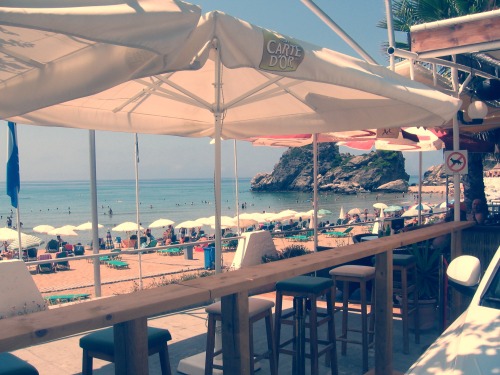
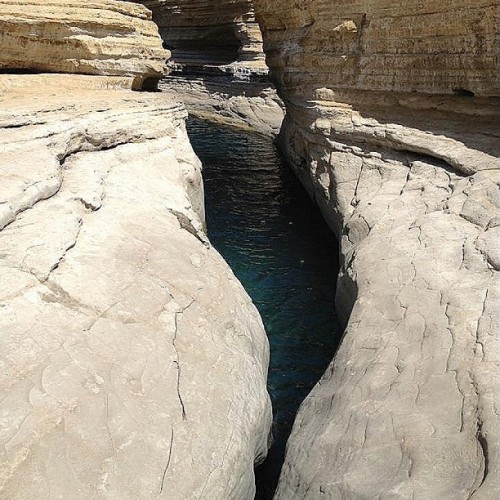
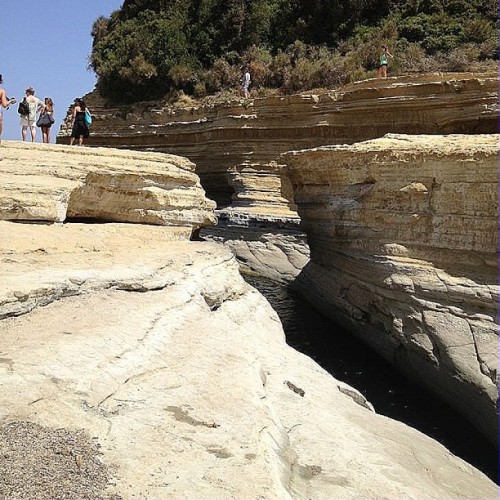
sidari
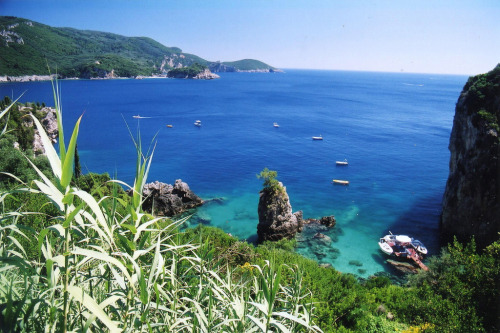
palaiokastritsa
Kérkyra old town
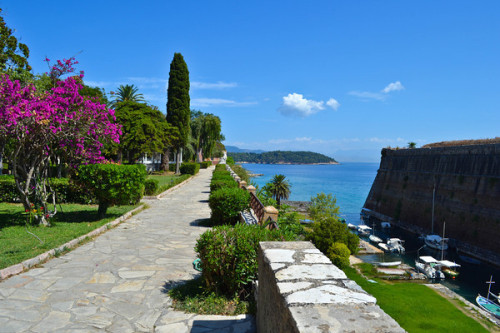
main sq
Kérkyra’s old quarter (1), with its arcades facing the Spianáda, its pastel-hued multi-storeyed dwellings, peaceful squares and slatted Venetian-style shutters, was clearly the basis for the Unesco heritage status, and amply rewards any time spent strolling.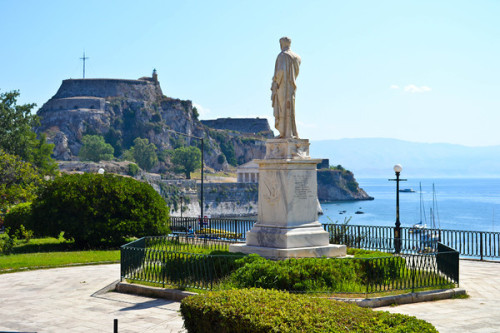
Schulemburg Statue and the old fortress


Neither should you miss the excellent Asian Art Museum (2) (Tues–Sun 8am–7.30pm, closes earlier in winter; €3), artefacts from China, Japan, Tibet, the Gandhara kingdom (today’s eastern Afghanistan plus northern Pakistan) and Thailand amassed by two Greek diplomats and housed in a former palace, and the Byzantine Museum (Tues–Sun 9am–3pm; €3) on Arseníou, with unique icons, many Venetian- influenced by refugee painters from Crete, of the 15th to the 18th century.
Of the two forts which bracket Kérkyra town, the Venetian-built Néo Froúrio (3)(open daily 8am–7.30pm, closes 3pm in winter; €3) is architecturally the more interesting, and affords superb views over the tiled roofs of the old town.

The meandering, waymarked Corfu Trail (4) – requiring eight to 10 days to cover its 137-mile course from one end of the island to the other – makes a prime introduction to every conceivable landscape, from bird-rich lagoons to the highest summits. The route avoids roads as much as possible, no mean feat in a society as bulldozer-crazy as Greece. Get the authorised map-guide for just €10 throughwww.corfutrailguide.com

The postcard view from Kanóni (5) to Vlahérna islet and Pondikonísi: clichéd, but still unmissable. The belvedere, once defended by a canon (thus the name), now with handy cafés, is served by no. 2 city bus, or point a bike there (car-parking space is rare in season). Vlahérna, tethered to the main island with a causeway, is completely covered by the Venetian-era white monastery of Panagía Vlahernón.

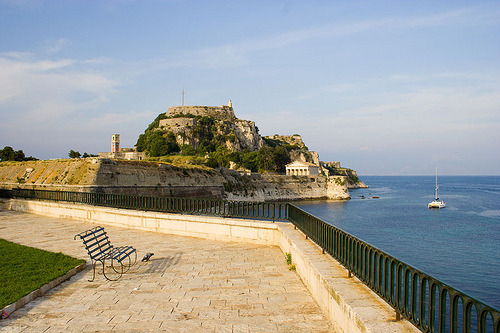
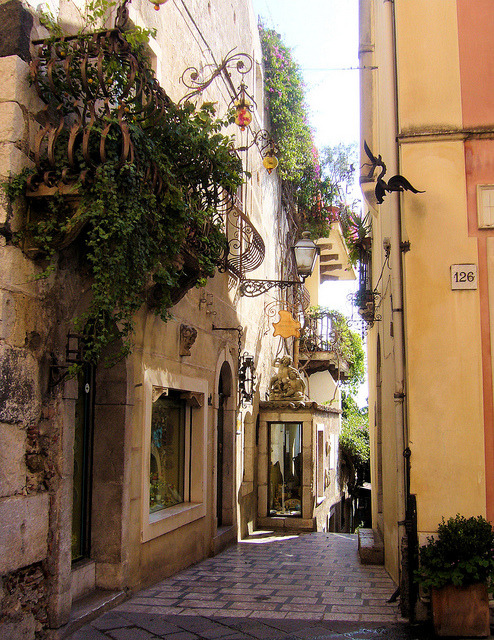
From the base of the jetty, excursion boats chug out to Pondikonísi (Mouse Island), home to dense stands of trees and a tiny Byzantine chapel. Along with several other islets around Corfu, this claims to be the petrified, ancient Phaecian ship, returning from ferrying Odysseus home to Ithaca, so rendered by Poseidon in revenge for Odysseus’ blinding of his son Polyphemos the Cyclops.
Paleá Períthia (6): Nestled in a hollow on the north slope of island summit Mt Pandokrátor, this Venetian-era village was abandoned from the 1960s onwards, resulting in a medieval time-capsule. Since the 1990s, it has attracted both casual visitors and those after second-home restoration projects. Paleá Períthia lies astride the long-distance Corfu Trail, while four good tavernas also make it a popular excursion target. Sadly, the surroundings are a bit scorched for now, after a devastating August 2011 brush fire, but most appeal here resides in wandering the cobbled lanes between the stone-built dwellings and churches.
Kassiópi (7): This mass-market resort, at the end of the corniche route threading through the more rarified havens of “Kensington on Sea”, is one of the few north-coast spots that has kept its charm. It has been a resort of sorts since Roman imperial times – Tiberius had a villa here, and Nero paid a musical visit with his lyre in AD 66 – and it’s easy to see why, with a deeply indented fishing port flanked by a small Angevin castle from the 13 century. There are plenty of small beaches within walking or cycling distance: four secluded ones fringing the castle headland, plus Kogevínas (aka Sykiá) and Avláki east of town.
Angelókastro (8): Despite repairs and consolidation in recent years, there’s not much left inside this compact castle besides an underground church and some cisterns, but the views amply reward the short climb to the summit with its little chapel and much older rock-cut tombs beside it. Originally a 12-century foundation of Byzantine emperor Manuel I Komnenos, the Venetians later used Angelókastro as a watchpoint to survey Adriatic sea-lanes – at the first sign of trouble, signal fires relayed the news to Kérkyra Town’s fortresses. Owing to budget constraints, currently only open May–Sept Mon–Fri 8.30am–3pm.

© funkyfood London - Paul Williams / Alamy
History and Folklore Museum of Central Corfu, Sinarádes (9): Well signposted near the north entrance of an appealing village, this traditional Corfiot house (Mon–Sat 9am–2pm) holds two floors worth of exhibits. The ground floor has been left essentially as it was when inhabited, while the single-room upstairs gallery is devoted to a miscellany of bygone rural impedimenta and household widgets. The star exhibit is a surviving chunk of papyrélla raft made of cane fennel, of a type used along Corfu’s west coast until the 1950s; equally intriguing are a moray-eel trap of the same material, a wicker cage to keep toddlers from wandering off, and two ‘birthing’ saddles used by local women.
Climb Ágii Déka, Corfu’s second highest peak (10): From Áno Garoúna village, a portion of the Corfu Trail leads steeply up to the top (allow an hour) for superb views over the town and airport lagoon. Well, not quite the top, which is dominated by a Greek Air Force radar golf-ball. Although only 576m in elevation, this humpbacked hillock in fact appears to be an extinct volcano; the summit conceals a shallow caldera with a lush orchard of fruit and nut trees belonging to nearby Pandokrátora monastery, no longer inhabited. Keen walkers might consider continuing along the Corfu Trail, briefly as a cobbled mule path, down and northeast to the hill village of Ágii Déka.
Rock formations, Sidári (11): Just west of this busy resort, the coastal sandstone cliffs have been eroded over the aeons by wind and water into otherworldly shapes. The most famous single formation is the rather regrettably named Canal d’Amour (it sounds slightly better in Greek: Kanáli tis Agápis), so named for the legend stating that by swimming the length of the channel here, lovelorn women would gain the object of their affections. More conventional bathing is available at little cliff-backed coves around the corner.
Theotókou monastery, Paleokastrítsa (12): Being firmly on the tour-coach circuit hasn’t diminished the appeal of this lovely eyrie, atop the bluff beyond Paleokastrítsa’s various coves. Although founded during the 13 century, the present, pastel-hued monastery (daily 7am–1pm & 3–8pm) was rebuilt after a fire some five centuries later. The church is crammed full of noteworthy icons, there are further displays in a little museum occupying the former olive press (including the skeleton of a ‘sea monster’), while burgeoning potted plants plus cascading bougainvillea fill the courtyard and the arcaded passageways around it. A half-dozen monks still live here.
© kpzfoto / Alamy
Day trips
Beautiful Corfu islandThe most worthwhile, obvious day trips go to Ágii Saránda in Albania for the spectacular nearby Roman ruins of Butrint, and to the three inhabited Diapóndia islets just north-west of Corfu. Albanian excursions are best organised directly through Petrakis Ionian Cruises (00 30 26610 251550, www.ionian-cruises.com); or Meander Travel (00 33 26610 37546). Budget €65-90 (about £55-75) for the day, including coach transfers, lunch and boat fare, depending on how many attractions you cram into the schedule - the more expensive tours visit the showcase village of Gjirokaster, some ways inland.

© Marion Kaplan / Alamy
Caique passage to the islets is most easily arranged in the north-westerly port resorts of Ágios Stéfanos or Sidári. Eríkoussa has the two sandiest beaches of the trio and is predictably popular with those merely after a lazy afternoon, though one can choose instead to cruise the remoter islets of Othoni and Mathraki (most reliably for Agios Stefanos).
Book a horse trek through the lush foothills of Mt Pandokrátor at Sally-Ann Lewis’ well-established Trailriders stable outside Áno Korakiána village (tel: 26630 23090, www.trailriderscorfu.com). In season, rides (groups limited to 8) take place three days weekly along shaded tracks from 10am to noon and 5 to 7pm.
Achilleion
Achilleion (Greek: Αχίλλειο or Αχίλλειον) is a palace built in Corfu by Empress (German: Kaiserin) of Austria Elisabeth of Bavaria, also known as Sisi, after a suggestion by Austrian Consul Alexander von Watzberg.[1] Elisabeth was a woman obsessed with beauty, and very powerful, but tragically vulnerable since the loss of her only son, Crown Prince Rudolf of Austria in theMayerling Incident in 1889. A year later in 1890, she built a summer palace in the region of Gastouri (Γαστούρι), now the municipality of Achilleion, about ten kilometres to the south of the city of Corfu. The palace was designed with the mythical hero Achilles as its central theme. Elisabeth spoke Greek better than any of the Greek queens that were her contemporaries and she expressed a desire to further immerse herself in the Greek culture. Like every other European royal, she had some Byzantine emperors among her distant ancestors.
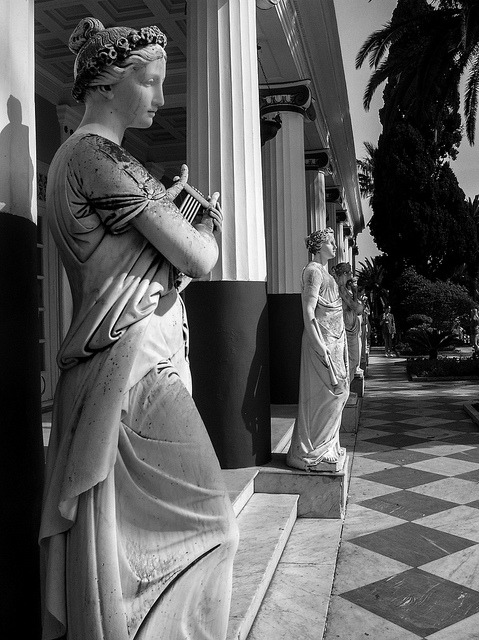
The Muses at the Achilleion
Corfu, Greece
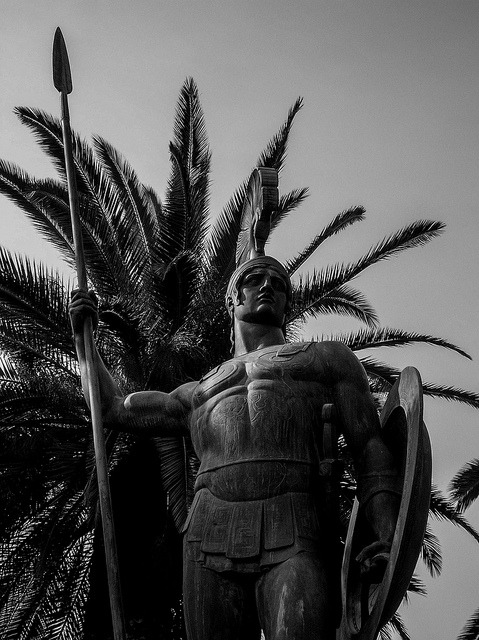
The Triumphant Achilles at the Achilleion
Corfu, Greece


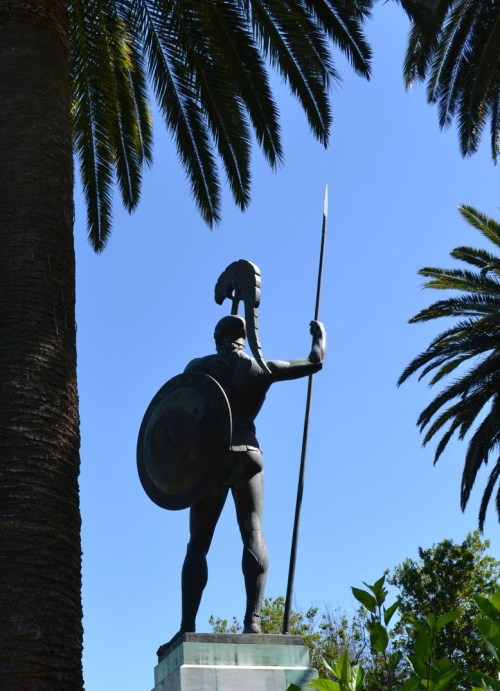
Statue of Achilles, Corfu
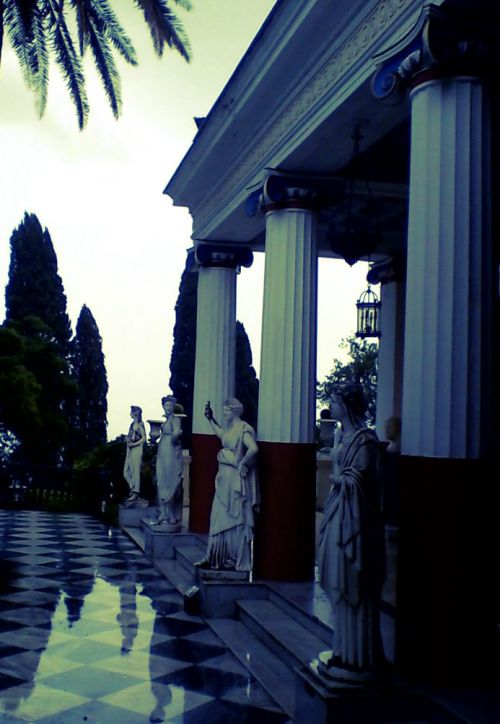
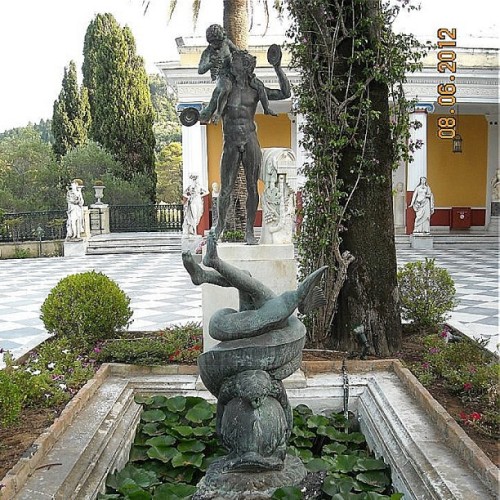
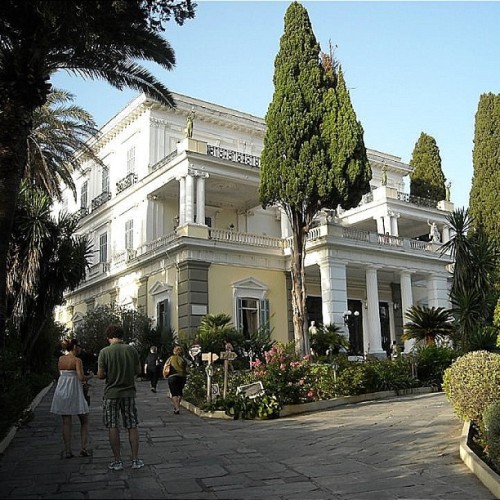


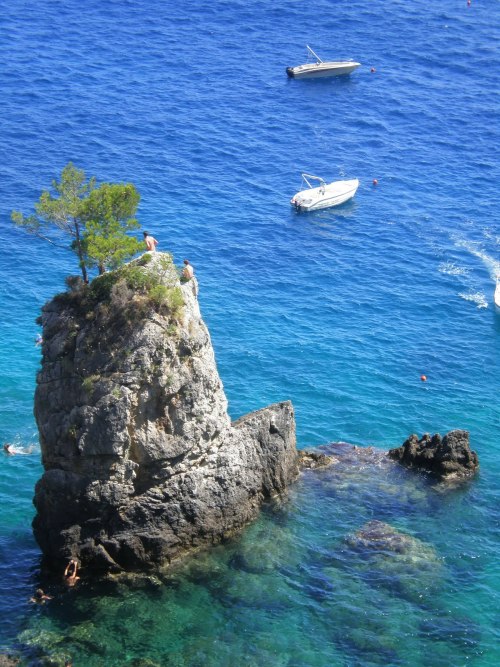
Δεν υπάρχουν σχόλια:
Δημοσίευση σχολίου